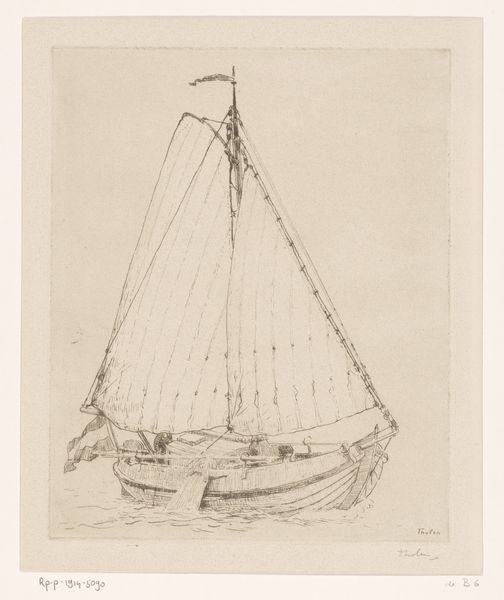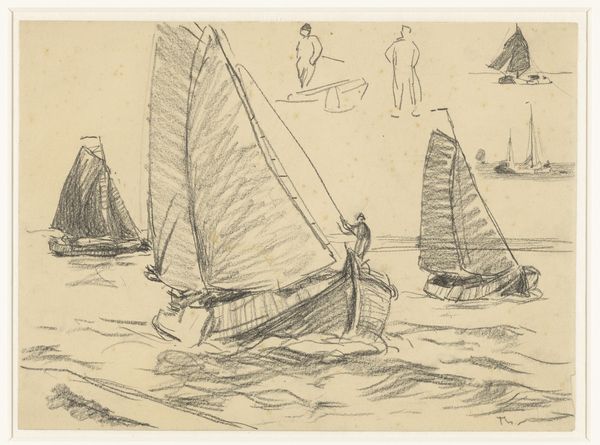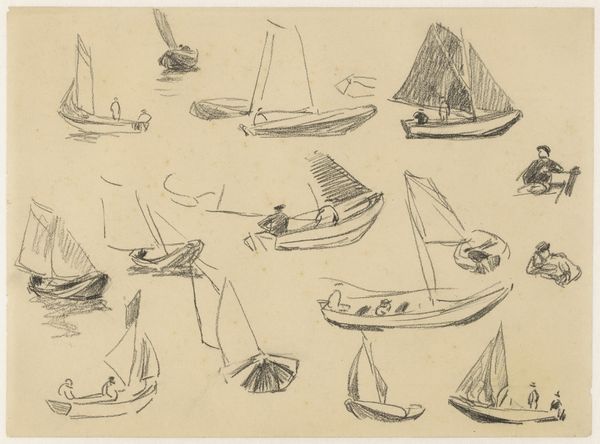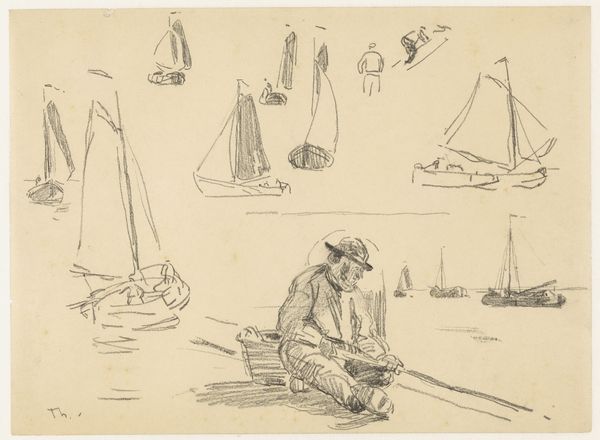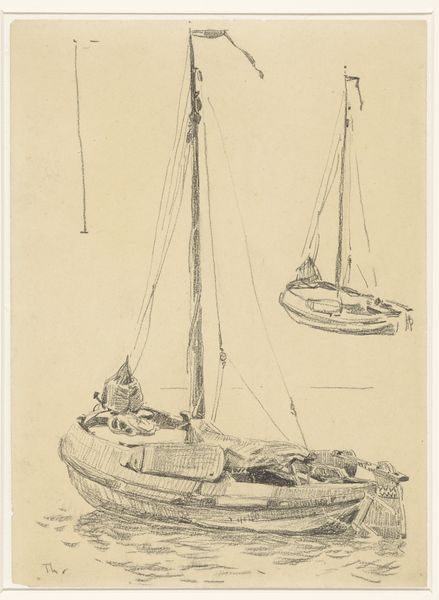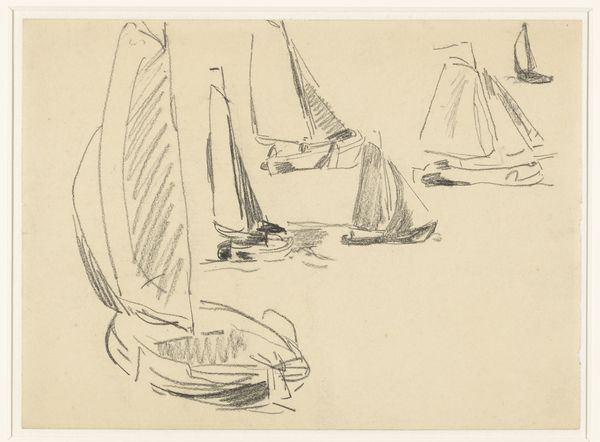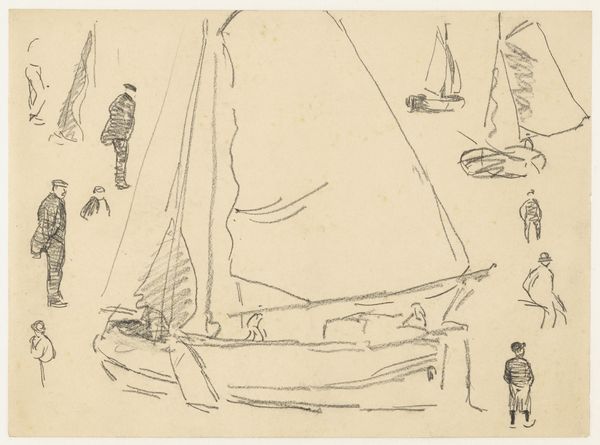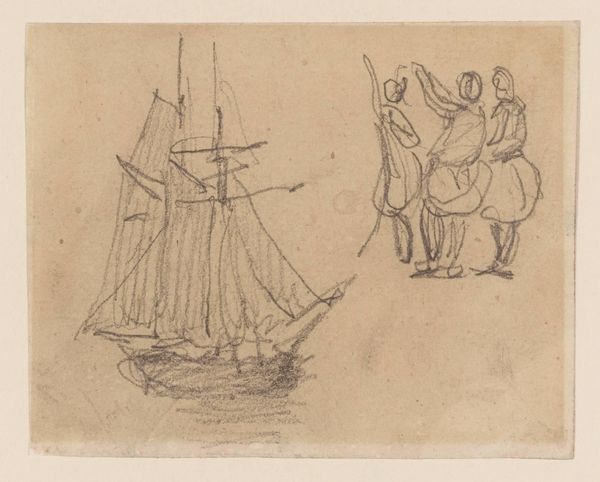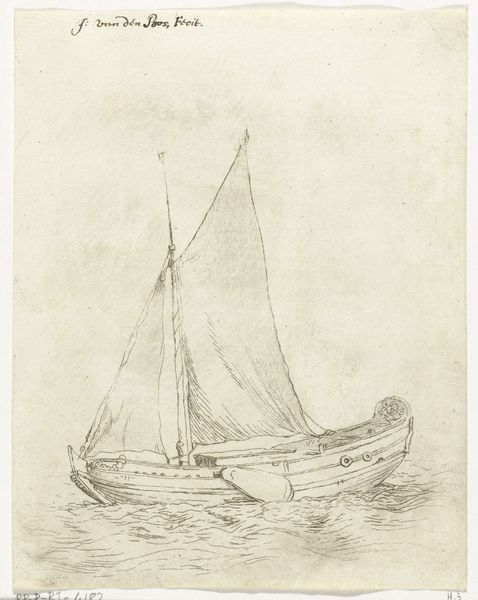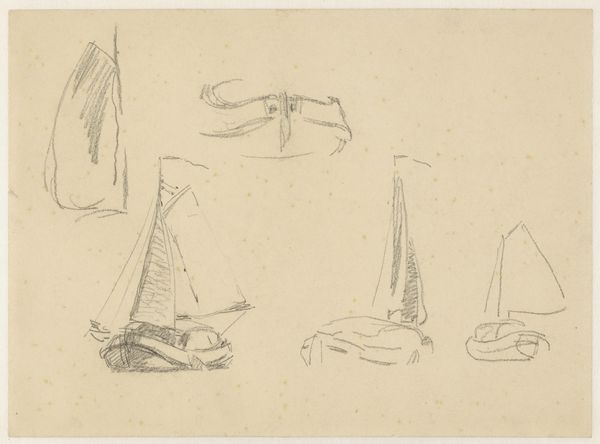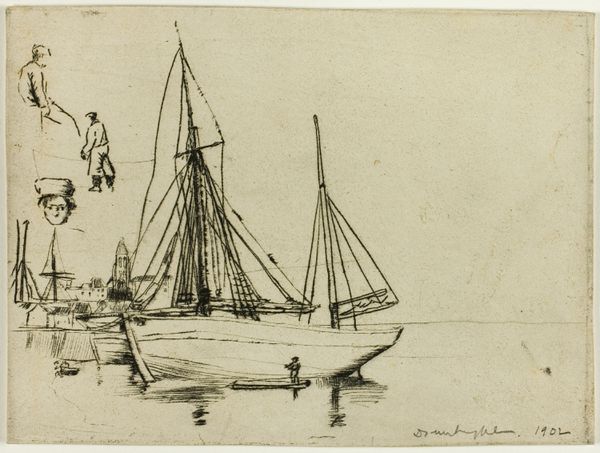
Dimensions: height 309 mm, width 225 mm
Copyright: Rijks Museum: Open Domain
Editor: This is a study sheet with various sailboats and figures, created by Willem Bastiaan Tholen between 1870 and 1931. It’s currently housed in the Rijksmuseum. I’m really drawn to how loose and free the lines are – it really feels like a snapshot of a fleeting moment. What strikes you most about this drawing? Curator: Indeed. Consider the composition: the dynamic arrangement of forms scattered across the plane. Note the interplay of lines and their varying weights which establishes a clear visual hierarchy. Thicker, more defined lines articulate the primary vessel, while lighter sketches recede, creating depth. Do you see how the blank space contributes to the overall dynamism? Editor: Yes, the blank space makes it feel less like a formal portrait and more like, as I said before, a momentary snapshot. It adds to the sketch-like quality. But how do you reconcile this informality with its place in a museum? Curator: Its artistic merit lies precisely in its structure, and less in its historical representation of sailboats. We can regard it as a demonstration of mark-making, with shapes existing only because of the relation of lines to each other. Its placement then becomes a case study in the artistic journey and technique rather than historical record. The artist plays with varying perspectives; it allows for a unique analysis of the relationships between foreground and background. Notice also that it isn't just any kind of sketch, it’s an ink and pencil drawing – how do those materials function together here? Editor: That's interesting; I hadn't considered the different functions of the pencil versus the ink. I guess the pencil allows for more shading, creating volume and texture, whereas the ink defines the contours. It definitely changes my perception of the image. Curator: Exactly! This study highlights that every mark is calculated; what we first read as chaotic scribbles turns into something of a harmonic and organized construction of depth and relation when closely viewed. Editor: This was insightful, and the discussion of line quality and material is useful for seeing new depths.
Comments
No comments
Be the first to comment and join the conversation on the ultimate creative platform.
